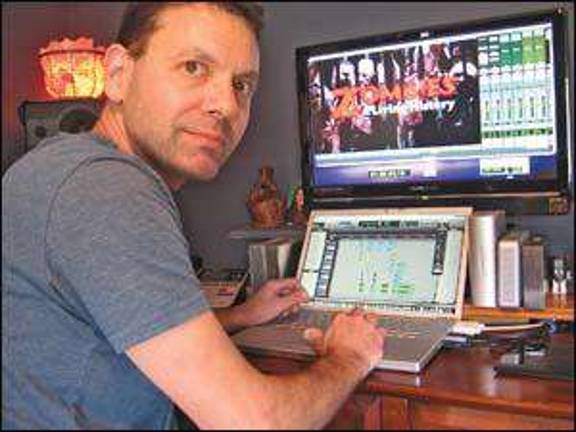Monroe sound engineer helps create 'zombie zeitgeist' show

History Channel’s 'Zombies: A Living History’ to air this weekend MONROE Ghoulish laughs. Piercing screams. Creaky footsteps. Crazy sound effects. If there’s any weekend to learn about the gory, messy and creepy world of zombies, this is it. And with the sound expertise of a Monroe man, History Channel viewers can get themselves up-to date on their eerie lives by watching “Zombies: A Living History.” “There’s been zombie legends in every culture,” said Brian Weber, the show’s sound engineer. “The show is based on fact.” The show also tackles the folklore and fiction about the “zombie zeitgeist” in pop culture today, according to www.ogoly.com, and includes interviews and reenactments. Weber, who now works out his Monroe-based sound studio, had been working in New York recording studios for 20 years and in audio post-production for the past 15 years. His company provides full service audio post production services for television commercials, shows, documentaries, radio commercials and industrial or educational needs. “I went out on my own and now I entice clients to commute to me from New York City,” he said. Horror lore The show was produced by John Palakas with Andre Abramowitz serving as co-producer and writer. As with many History Channel programming, Weber explained, the duo pitched their idea to network executives a couple of years ago. Eventually, they got the go ahead and budget and then needed to hire staff to make the program a reality. “(Our goal was) to help put the zombie up on a pedestal and help it get the respect that it is so deserving in horror lore,” said Abramowitz in an interview on www.ology.com. “We wanted to make a show that people had never seen before, not try to find 'real-life’ zombies in Haiti... but trying to trace back the roots of the myths and legends that have informed what we know today as the zombie. Along the way, hopefully we can scare people a bit, give them a history lesson and get them thinking about disaster preparedness.” Weber has worked with them on other projects. “They are old clients,” said Weber, who has been a part of many television commercials and has previously worked for the History Channel in addition to the Food Network, A&E and USA Network. “Like any industry, you have to talk up the idea. It’s not an overnight thing. Through word of mouth, they got in touch. I was able to entice him (Palakas) to use me for this project.” The fun part about the program was that its lack of reality allowed for some unique sound creativity. “The program had a real opportunity for a lot of audio effects,” said Weber, who even invented sounds for the show. “It’s not realistic so you can get crazy.” Every sound you hear Craziness aside, the project still required an intense amount of work. “People don’t really think much about the sound.” Weber said. “You want them to be pulled into the story. But every sound you hear, I put it there.” Weber said there’s three major components to the project: The announcer’s voice, the actual sound design and the final mixing of all sounds. “I place the voice where it’s appropriate per the script,” he said. “There’s multiple takes. You pick the best one and put it where it belongs. Then there’s all sorts of sounds for sound design. The final mix is where you put the elements together so they are properly balanced.” The show has nine segments which required many revisions over a month’s time and Weber said the group is happy to be done. “I think everyone is a little burned out,” he said. “But it is cool.”